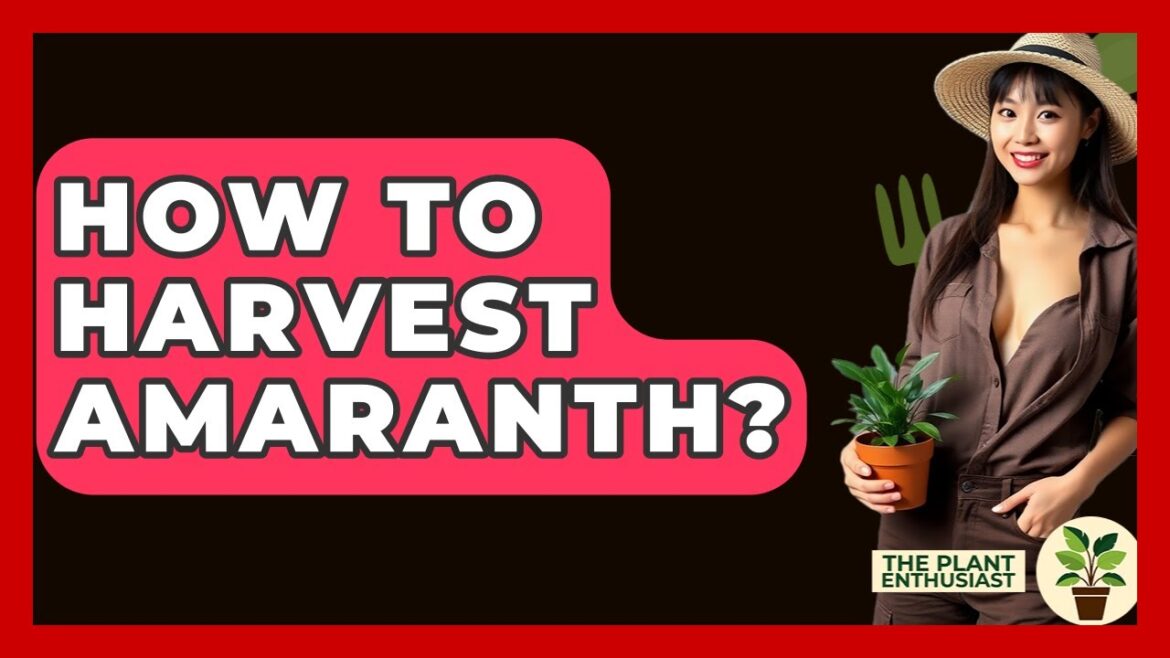How To Harvest Amaranth? In this informative video, we will guide you through the steps of harvesting amaranth, a plant known for its vibrant appearance and tasty edible components. From its nutritious leaves to its beautiful flowers and sought-after seeds, amaranth offers a variety of uses in the kitchen and garden. We will cover the best practices for harvesting each part of the plant, ensuring you get the most out of your gardening efforts.
Learn when to pick the leaves for optimal flavor, how to cut the flowers for arrangements or drying, and the right timing for collecting seeds. We’ll also discuss techniques like winnowing and threshing to help you clean and store your seeds properly. Whether you’re looking to enjoy fresh greens, create stunning floral displays, or save seeds for future planting, this video is packed with practical tips to enhance your gardening experience.
Join us on this journey to make the most of your amaranth plants and enjoy the delicious benefits they provide. Don’t forget to subscribe to our channel for more helpful gardening tips and tricks!
⬇️ Subscribe to our channel for more valuable insights.
🔗Subscribe: https://www.youtube.com/@The-Plant-Enthusiast/?sub_confirmation=1
#Amaranth #HarvestingPlants #GardeningTips #EdiblePlants #PlantCare #HomeGardening #VegetableGardens #HerbGardening #SeedSaving #OrganicGardening #GardenHarvest #PlantHarvest #FlowerArranging #HealthyEating #GardeningCommunity
About Us: Welcome to The Plant Enthusiast, your go-to destination for everything related to the wonderful world of plants! Whether you’re a seasoned gardener or just starting your green journey, our channel is dedicated to nurturing your passion for plant care, cultivation, and creativity.
How to harvest amaranth. If you are curious about how to harvest amaranth, you are in for a treat. This plant is not only beautiful but also offers delicious edible parts. Let’s break down the process for harvesting its leaves, flowers, and seeds. First, let’s talk about the leaves. You can start picking amaranth leaves anytime during the growing season. Young leaves are tender and can be enjoyed fresh, similar to spinach. If you prefer older leaves, they have a stronger flavor and are best when cooked or steamed. Regularly harvesting leaves encourages the plant to produce new growth, so feel free to pick them often. Next up are the flowers. To harvest amaranth flowers, wait until about 3/4 of the flowers on the spikes have opened. The best time to cut the flowers is early in the morning. This ensures they are fully hydrated which helps them last longer. You can use the flowers fresh in arrangements or dry them. To dry, hang the stocks upside down to preserve their color and shape. Now, let’s get to the seeds, which are often the most sought after part of the plant. Amaranth seeds mature about 100 to 120 days after sewing. You will know they are ready when the flower heads start to turn brown. To harvest, cut off the entire flower heads once you notice seeds falling when you lightly brush them. After cutting, place the flower heads in a paper bag or pillowcase to let them dry completely. Once dried, shake the bag to releases the seeds from the flower heads. To separate the seeds from the chaff, you can use a method called winnowing. Pour the seeds from one container to another in front of a fan. the lighter chaff will blow away leaving the heavier seeds behind. Another option is thrashing which involves beating the dried seed stocks to releases the seeds. After thrashing, winnowing is necessary to clean the seeds. Once cleaned and dried, store the seeds in an airtight container. They can last four several months at room temperature or up to 6 months if frozen. Some growers choose to wait until after frost kills the plants before harvesting seeds. This can make thrashing easier. When harvesting seeds, it is common to break off the seed heads and leave the stems standing temporarily. You can cut the stems down later to decompose. Amaranth plants can selfseed if left in the garden, but harvesting seeds allows you to control propagation and use the grain for food. So whether you are after the leaves, flowers or seeds, harvesting amaranth is a straightforward process that can be tailored to your needs. Enjoy your gardening and the delicious benefits of amaranth.

